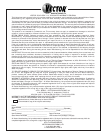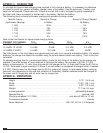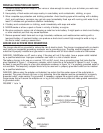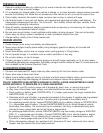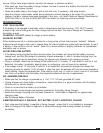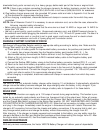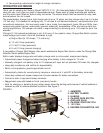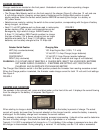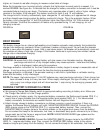
service. Follow these simple steps to maintain the charger in optimum condition:
• After each use, clean the battery charger clamps - be sure to remove any battery fluid that will cause
corrosion of the copper clamps.
• Clean the outside case of the charger with a soft cloth and, if necessary, mild soap solution.
• Keep the charger cords loosely coiled during storage to prevent damage to the cords. Do not use the
charger if cords or clamps have been damaged in any way - call Vector Technical Support Department at
(954) 584-4446 or toll free at (866)-584-5504 for details on replacing cords and clamps.
TROUBLESHOOTING
VERY COLD BATTERY
If the battery to be charged is extremely cold (in temperatures less than freezing - 0ºC/32ºF) it cannot
accept a high rate of charge so the initial charge rate will be slow. The rate of charge will increase as
the battery warms.
WARNING: DO NOT attempt to charge a frozen battery.
SULFATED BATTERY
When batteries are left in a discharged state for a long period of time, they become “sulfated”. Sulfated
batteries cannot accept a high rate of charge since the internal plates are coated with lead sulfate. To see if
a battery in this condition can be “saved”, take it to a service station or battery distributor for professional
evaluation and/or service.
SHORT-CIRCUITED BATTERY
• If the battery being charged has been short-circuited, the ammeter will show that the battery has zero
charge level, and that the charger is operating at peak amperage. If, after 5 minutes charging time, the
ammeter reading has not decreased, unplug the charger and discontinue the charging process.
• Using a voltmeter, determine the voltage of the battery and if it is under 12 volts (under 6 volts for 6 volt
batteries), the battery is probably beyond repair or recharging, and will need to be replaced.
• If the voltage is over 12 volts (over 6 volts for 6 volt batteries), reconnect the charger and resume the
charging process for another 15-20 minutes. If, after that time, the ammeter still has not moved towards a
lower reading, repeat the voltmeter test. If the reading is still over 12 volts (or over 6 volts for 6 volt batter-
ies), there is a problem with the battery that requires professional service or replacement.
NO AMMETER READING
• Make sure that the charger is powered by a “live” 110/120-volt grounded AC outlet.
• Unplug charger and check battery connections - ensure that there is a good connection with the battery
terminal and/or vehicle chassis.
• Check to be sure that the battery is not sulfated.
• Check that the correct charge rate has been selected for the battery being charged.
• Ensure that enough charging time has been allowed for - check table in Appendix for approximate
charging times.
• See Pre-charge Battery Activation.
AMMETER DISPLAYS A READING, BUT BATTERY IS NOT ACCEPTING CHARGE
• First, make sure that battery is capable of being charged - ensure that it is not sulfated or damaged.
• Refer to Charging Time Table in Appendix to ensure that enough time is being allowed to charge
the battery.
8





